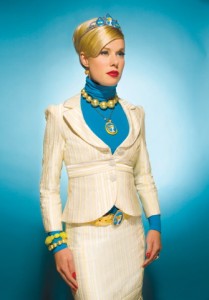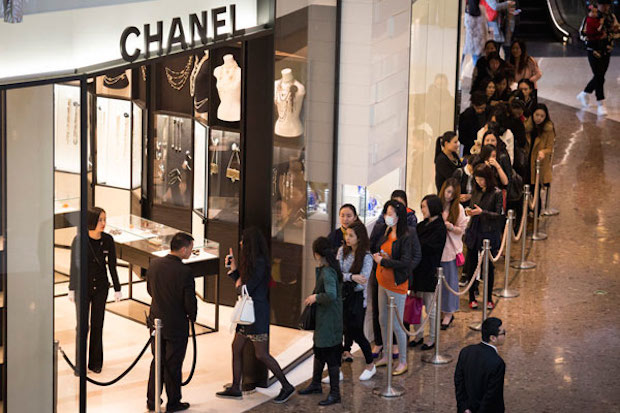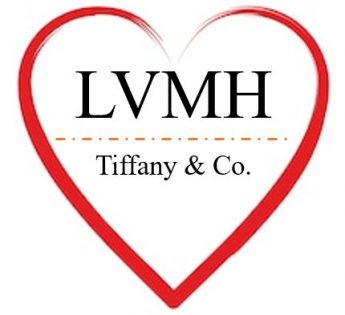When using luxury brands consumers make a subtle claim that they are special, different and at the very forefront of social trends. Therefore, creating a fit between the social trends and keeping up with them is one of the critical strategic issues for all luxury brands. However, with mass-market brands gradually upgrading their appearance, strategic response and approach to marketing their products, many luxury brands are finding it hard to stay ahead of the peck.
In this scenario, many luxury brands have decided to move beyond their niche and diversify very quickly into other market spaces which the consumer may not associate with the specific luxury brand. The idea of brand extension and at times irrelevant diversification (i.e. moving away from one product category to another one) is particularly delicate issue for luxury brands. This is mainly because of the strong brand origin and brand image associations luxury brands have in consumer minds.
While there are some brands who manage to extend their portfolio without any major issues, many luxury brands find it a massive struggle and therefore should think about such extensions carefully. For example, Prada’s move from shoes to handbags and then into ready-to-wear market worked every time. Same was the case with Gucci. However, it took many years for the first Bulgari watch to become a success. In case of smaller and boutique luxury brands, due to financial and marketing resource limitations, the issue of brand extension looks very lucrative but can become a bottleneck very quickly. For example, in 2005, Mattel decided to create Barbie-themed clothing and accessories and involved fashion designers such as Tarina Tarantino and Anna Sui to interpret Barbie’s wardrobe for grownups. However, this extension was identified as one of the worst extension for the year and so its effects on the involved designers may be felt in long-term. Another example of this is Audi in US market. Audi still struggles to crack the US market as consumers remember those sudden unintended acceleration issues and a series of product recalls associated with it nearly 3 decades ago.
Luxury branding and getting back to basics
In this regards, I would urge luxury brand managers to be highly cautious of brand extension and diversification. There are many other routes suggested by marketing experts which can be taken into account. For example, Ansoff’s Product/Market matrix provides good few insights on what other options can be exploited without diversification.
| Existing products | New products | |
| Existing markets | (1) Market penetration | (2) Product development |
| New markets | (3) Market development | (4) Diversification |
Figure 1: Ansoff product/market matrix for luxury brands
The image above shows interesting strategies for luxury brands too. In the quadrant 1 where a company wishes to expand itself into its present local market, could focus on various ‘market penetration’ strategies by (a) increasing the frequency of usage; (b) increasing the quantity used and (c) identifying new application of the product. I am sure the options a and b are quite feasible in case of most luxury brands which are used occasionally only by consumers as my research has shown. This in itself can lead to higher market share and stronger customer loyalty.
The quadrant 2 which focuses on developing new products for the current markets does not mean diversification but instead looks at ‘product development’ strategies. In this case, luxury brands can focus on product improvements (highlight them in communications carefully) and line extensions (after careful market research rather than an insiders only brainstorming).
The quadrant 3 focuses on ‘market development’ strategies. In this case, luxury brands should focus on (a) geographic expansion and (b) target new segments. For each of these options, specific strategic initiatives are required. Such as, for geographic expansion, cultural proximity and market understanding are a must. Similarly, when targeting new segments, it would be desirable to identify those peripheral groups which take the current luxury brand consumers as their aspirational leaders.
The quadrant 4 relates to diversification. However, remember this is quadrant 4 of 4 and that means it should really be thought of as one of the last options. If growth has not been possible with the first 3 quadrant a luxury brand should focus on diversification. However, in my own experience, I have seen entrepreneurs/managers focusing this as their first option. While if done carefully it can provide significant benefit, it’s quite risky also as seen in earlier examples.
My aim in this article was to offer some alternative strategies for luxury branding rather than just thinking diversification. Going back to basics can always help any luxury branding effort and I hope it would ignite that thought in you.
Image courtesy: BusinessWeek








